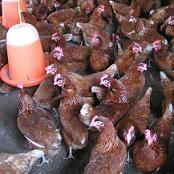New bird flu strain takes hold

Scientists in Hong Kong and the United States have detected a new strain of H5N1 bird flu virus in China that is overtaking other known strains.
The scientists, from the University of Hong Kong and St Jude Children’s Research Hospital in the US, have called the bird flu strain the ‘Fujian-like virus’ because it was first isolated in China’s southern Fujian province in March 2005.
The strain has increasingly been detected since October 2005 in poultry in six provinces in China, displacing other H5N1 strains.
The researchers collected 53,220 fecal samples from poultry markets across China between July 2005 and June 2006. Of these, 1,294 tested positive for H5N1.
But genetic sequencing of viruses collected from October 2005 onwards showed the Fujian strain was clearly becoming predominant over other H5N1 strains. Between April and June this year, 103 out of 108 H5N1-positive samples were of the Fujian type.
The strain might also have become resistant to vaccines, which China began using on a large scale from September 2005 to protect poultry from H5N1, said the scientists.
To test how well vaccinated poultry could stand up to various strains of H5N1, the researchers collected 1,113 blood samples from chickens from November 2005 to April 2006.
Only 180 samples, or 16 percent, tested positive for H5N1 antibodies. They were exposed to the Yunnan, Guiyang and Fujian-like strains.
The antibodies managed to neutralise the Yunnan and Guiyang strains, but had little or no effect on the Fujian virus.
“The predominance of this Fujian-like virus appears to be responsible for the increased prevalence of H5N1 in poultry since October 2005 and recent human infection cases in China,” they said.
“It has already caused poultry outbreaks in Laos, Malaysia and Thailand, and human disease in Thailand. It is likely that this variant has already initiated a third wave of transmission throughout Southeast Asia and may spread further in Eurasia.”













